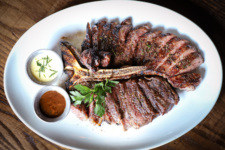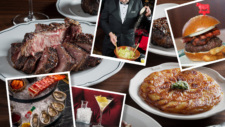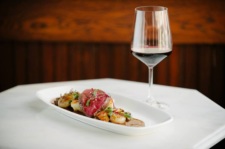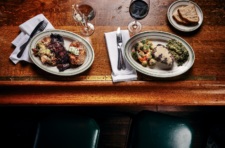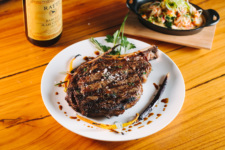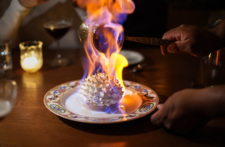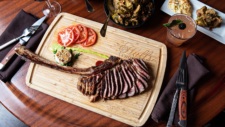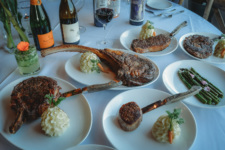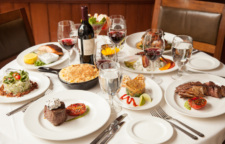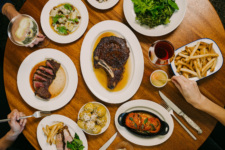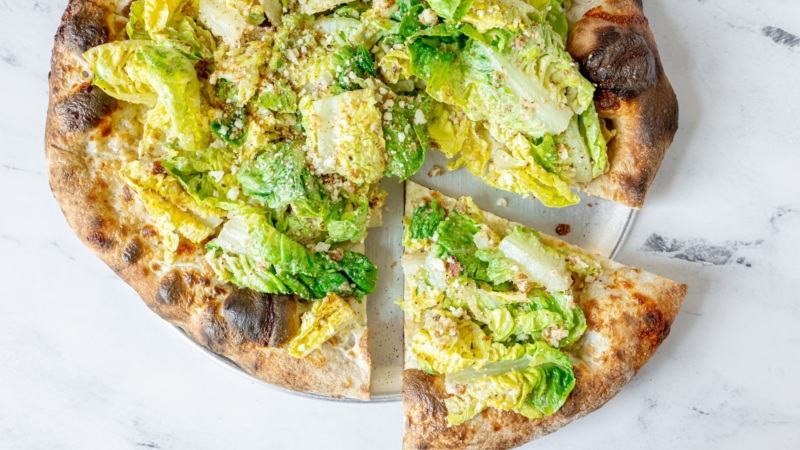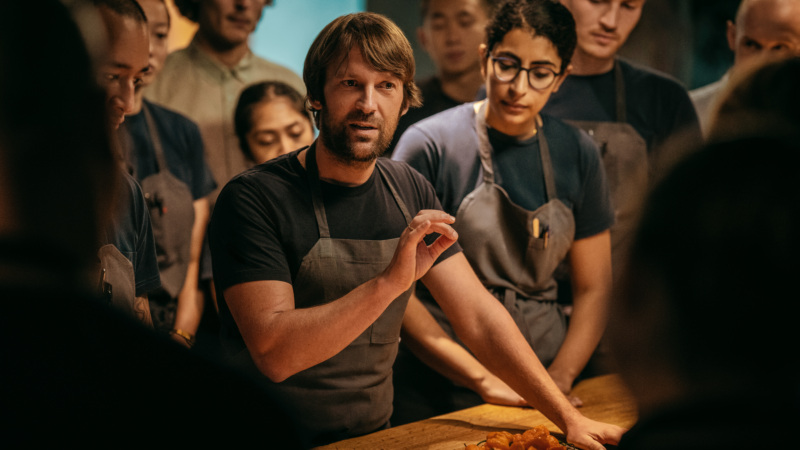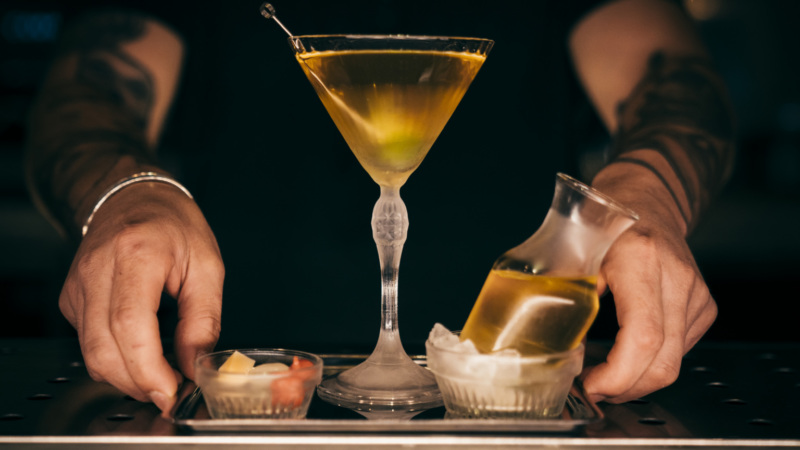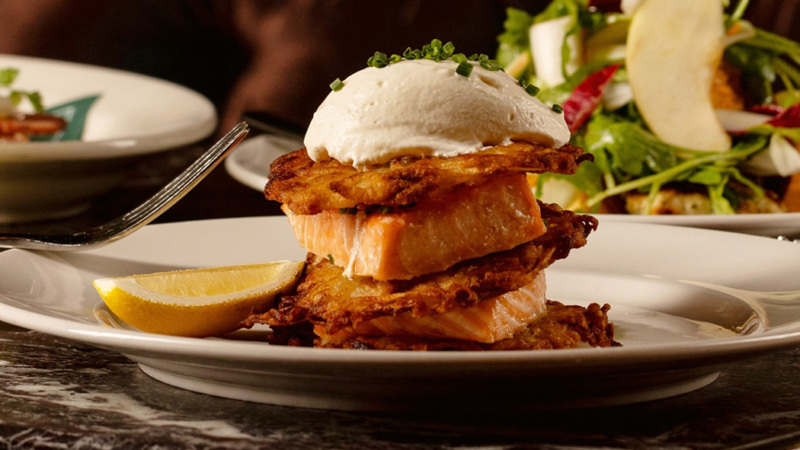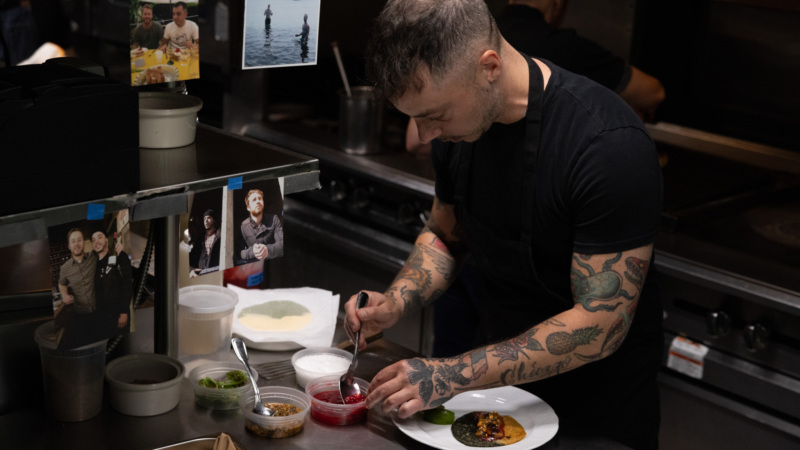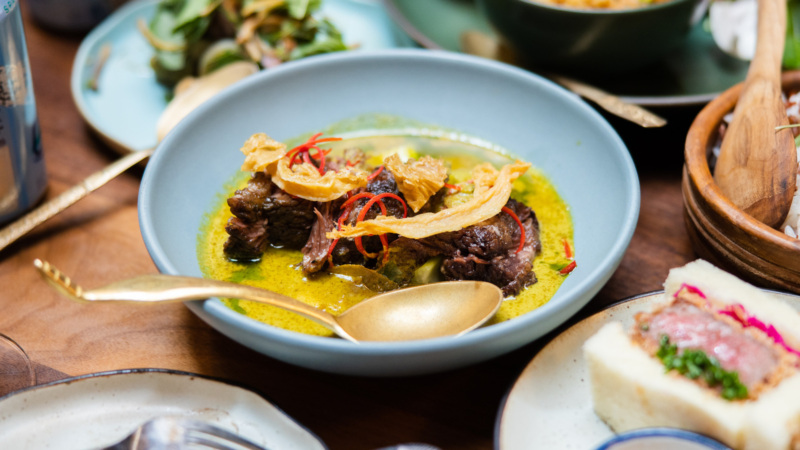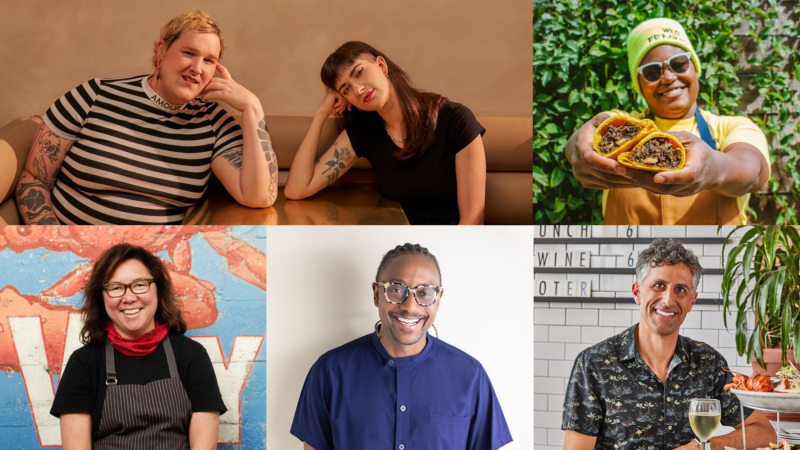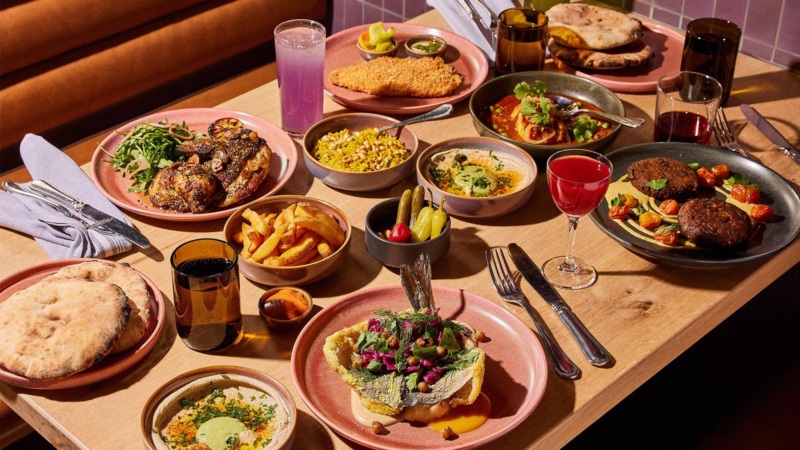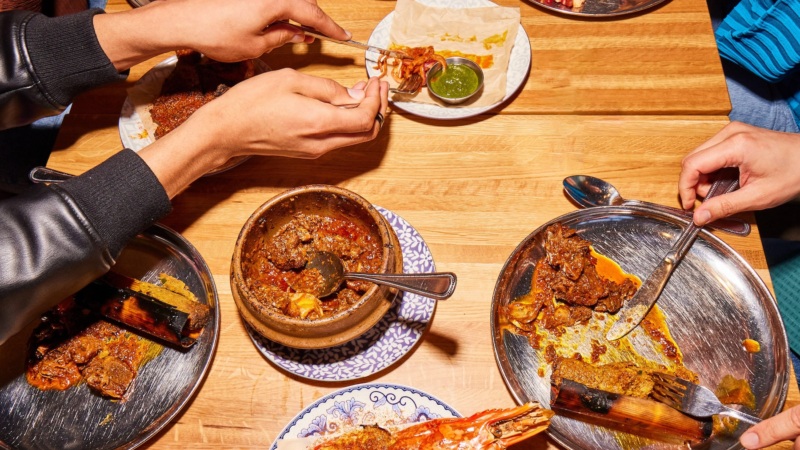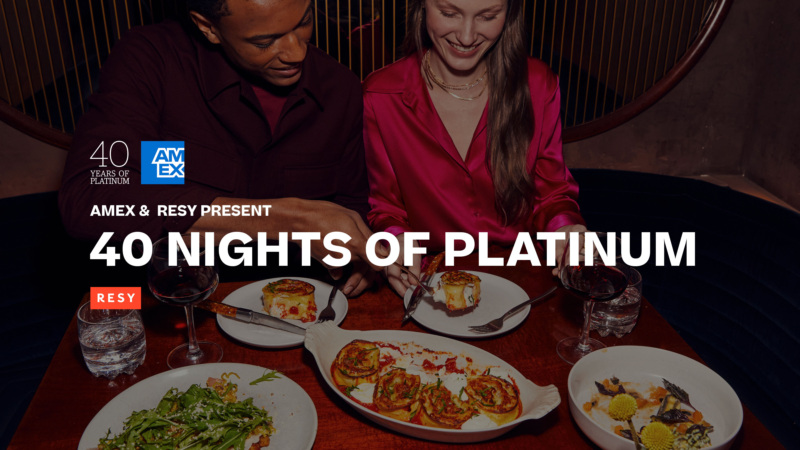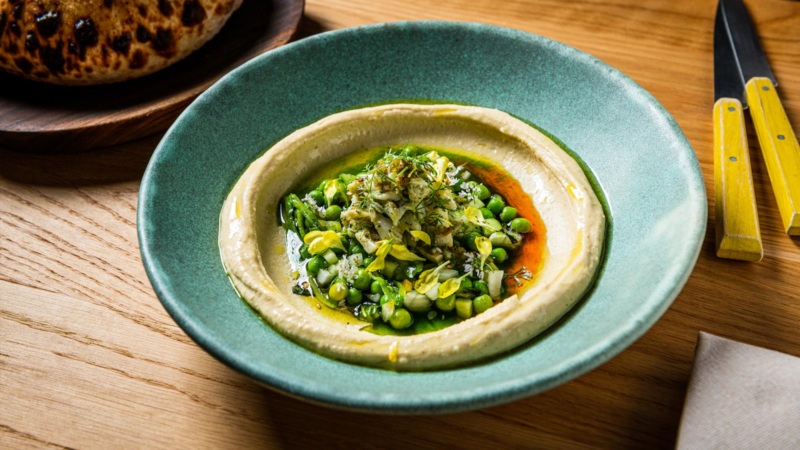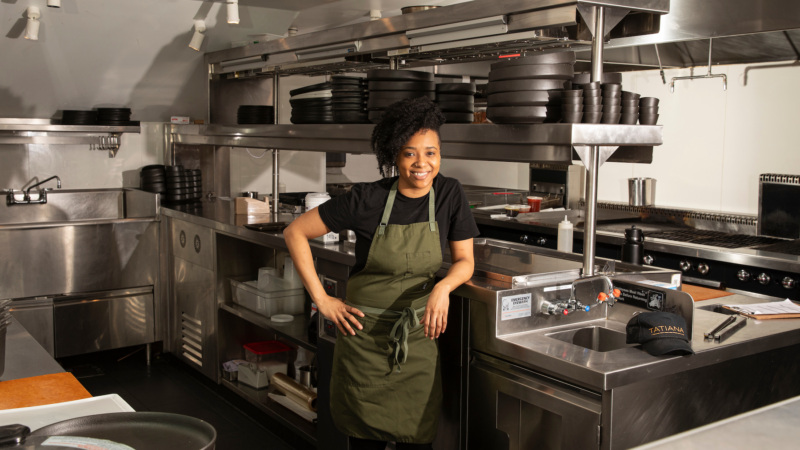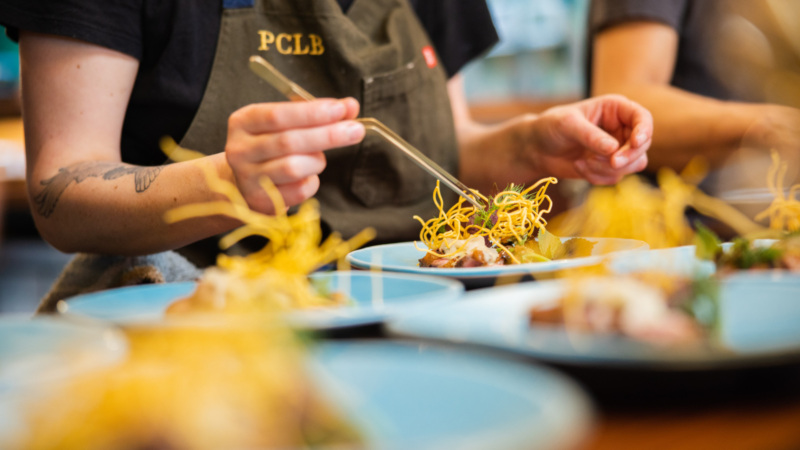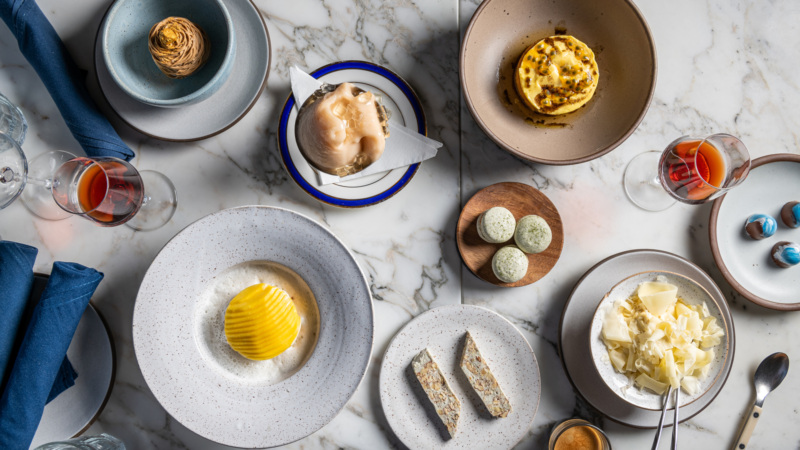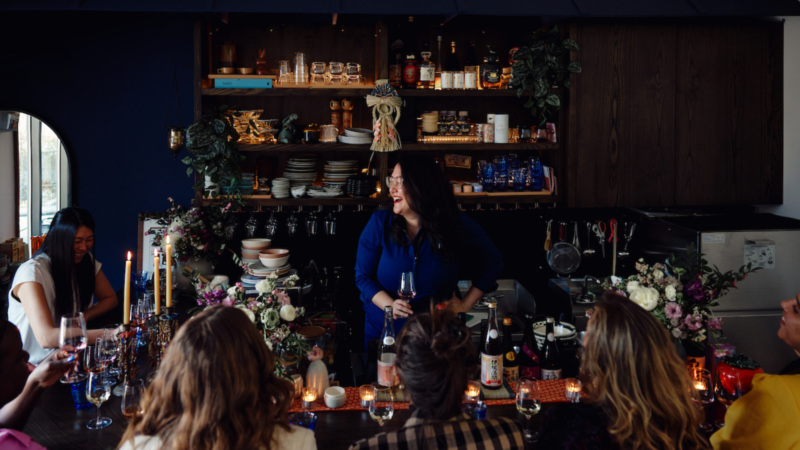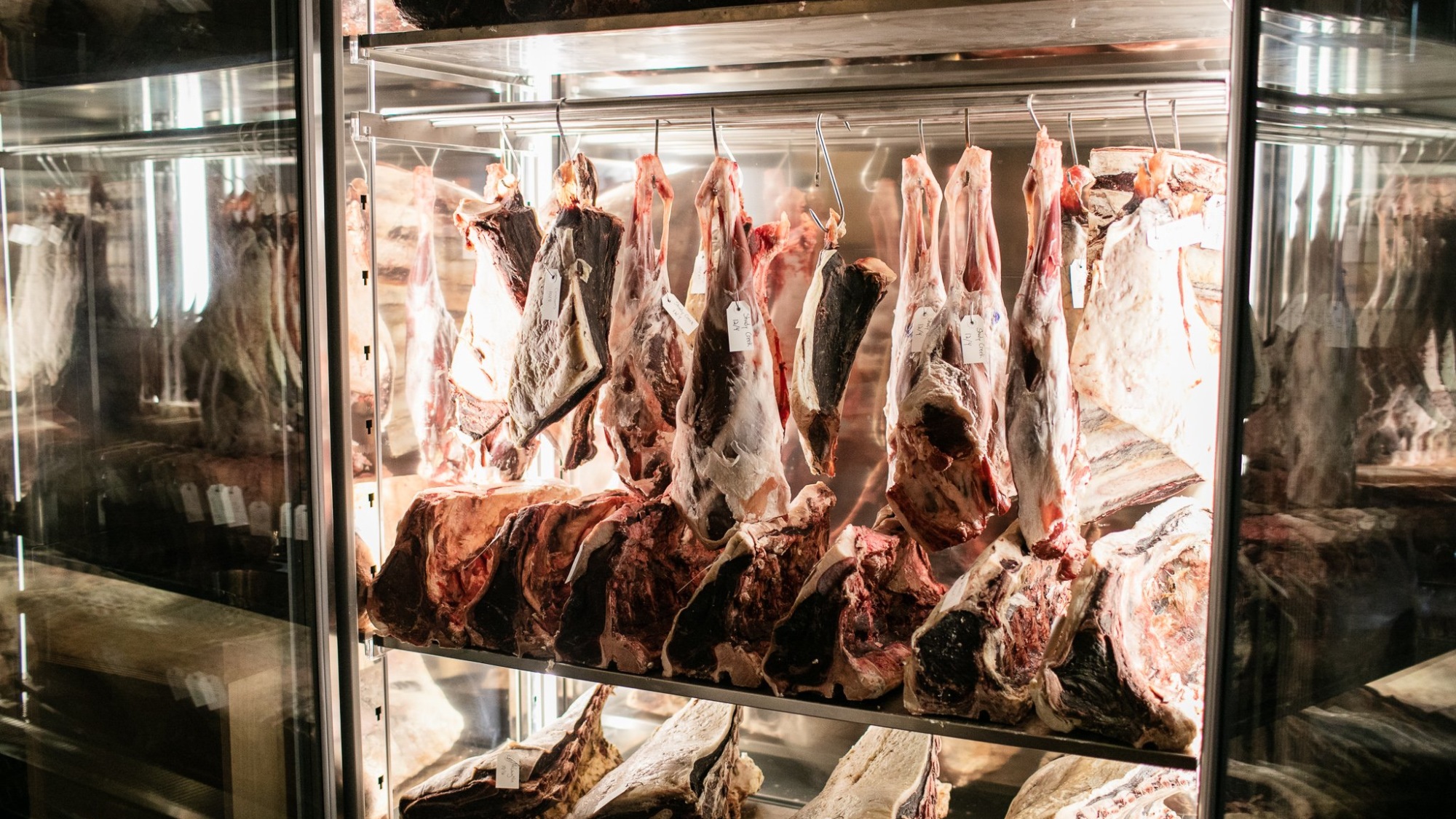
The Perfect Steak? This Chef and Butcher Has Some Answers
Plenty of chefs aim to impress with farm-to-table talk, but few are as dedicated as Sarah Welch, chef and partner at Marrow in Detroit.
Welch, who is perhaps best known for her impressive comeback run on season 19 of Bravo’s “Top Chef,” opened Marrow in the burgeoning West Village neighborhood in the fall of 2018 with partner Ping Ho. The pair aimed to make Marrow not just a trendy New American restaurant, but also the neighborhood’s boutique butcher shop, focusing on sourcing whole animals from small Michigan farms the staff has visited and thoroughly vetted.
Today, both the butcher shop and its adjoining restaurant are among the best places in the Midwest to find ethically raised, responsibly sourced, expertly butchered beef.
But one thing that Marrow assuredly is not, Welch says, is a steakhouse.
“There’s always beef on our menu, but there’s not always a steak on the menu,” Welch explains. “So it’s hard to call ourselves a steakhouse.”
Turns out, that aforementioned dedication to doing things the right way creates volume challenges for Welch and her small crew. After all, there’s only one short loin per cow, which makes it virtually impossible for the restaurant to offer the steakhouse experience some diners expect from a place with a name like Marrow.
That doesn’t mean you won’t find the occasional Saturday night New York strip special at the restaurant, but those prime cuts are most often reserved for the butcher case, held back for eager home cooks equipped with cast iron skillets. Instead, Welch is more likely to serve you a delicious flat iron, hanger, or Denver steak; cuts that might intimidate a home cook are transformed into greatness in the capable hands of a trained chef.
We recently sat down with Welch to talk about prime cuts of beef — and what you should be ordering instead.
Resy: How do you describe Marrow to folks who’ve never been?
Sarah Welch: We’re a butcher shop by day, restaurant by night — very Clark Kent. We are a whole animal butcher shop, and we have a foot-on-farm policy. Every animal that we bring in, we’ve visited that farm to make sure the ethics of the farm follow what we believe farm ethics should be.
But it’s not a steakhouse?
Even when we do have a beautiful steak on the menu, it’s very rarely on a plate with a simple potato with a sauce on the side. I love those things. But a lot of the time, we just don’t have the ability to do huge steaks. We’re limited by supply. If everybody wanted a 16-ounce rib eye at the restaurant, we wouldn’t be able to have any in the retail case or dry-age them for as long as we do. The case is the muse of the restaurant. It’s the heartbeat. We have to make sure the case has offerings that are just as stellar as the restaurant. It’s arguably more important to have a steak in the case, because we promised to be the neighborhood’s butcher shop, not the neighborhood’s steakhouse.
Why do diners always seem to gravitate to cuts like rib eye and New York strip?
Part of the appeal is the ease with which you can cook them. They’re a known variable. Braising is a technique that people screw up all the time. So to go and get a filet that you can sear and eat, or a rib eye that you can ace in front of your wife or friends, is a more comfortable sell.
It’s also perceived value. When the animal comes through the door, we’re paying just as much for the grind meat as we are the prime loin. But the perceived value of a steak is higher. People naturally correlate beef as luxury as opposed to pork or even lamb. If we have a 75-day dry-aged steak on the menu, people will order it not because they actually care to suss out the flavor of what that is, but because it’s twice the price. The difference with us is: the price is a direct reflection of the care that went into the product. If it sat in our dry-ager, it’s taking up real estate.
And then I think everybody has nostalgia about the steakhouse experience. I remember going to the steakhouse with my grandma, and she’d order a 16-ounce steak that she’d never finish.
Does this insatiable hunger for prime cuts create other supply challenges?
I think part of the problem is everybody does want that. And when we don’t have it in the case, it’s much harder to get someone to leave with a flat iron or trust us when we say a Denver steak is delicious.
The problem is that the need for that prime cut creates so much trim. With the rate we consume those prime cuts, Marrow is drowning in ground beef all the time. I’m sneaking ground beef into everything.
To offer these cuts responsibly, you have to have the means with which to go through everything else — and that’s a lot of work. It’s not just cutting that steak. It’s dealing with all the meat, and dealing with all the bone, too. All of those are technique-driven things. The product is perishable. And to get the most of out of it, you have to have a lot of technique. That’s why most of the butchers we’ve had were chefs before they were butchers. It helps. They’re thinking about what comes next.
And, quite simply, non-prime cuts are a better bang for your buck. You’ll spend the same amount of money and get way better yield, and odds are you’ll get far more interesting, flavorful meat. “Better meat less often” is a trope, but it’s true. We’d rather have someone buy an eight-ounce Denver steak and really enjoy it rather than a 16-ounce rib eye that they aren’t going to eat the fat from and spend double.
How do you personally navigate the classic steakhouse menu?
I am ordering whatever combo situation there is. If it comes with a house salad, I’m definitely doing that and it’s definitely going to have blue cheese on it. If there’s a soup, I’m doing lobster bisque every time or a chowder. And then prime rib all the way, because it’s really hard to do well. So when there’s a place that’s known for it, like Weber’s in Ann Arbor, which is where my grandmother would take me, that’s what I’m getting.
Why prime rib?
There are methods in large production kitchens that I don’t really understand. Just the idea of cooking and holding and preparing a roast at medium rare perfectly over and over again is just amazing to me. And I love to eat animal fat, and prime rib has a ton of it.
Do any other cuts ever tempt you?
I’m always intrigued by a Wellington. I’ve f***ed up so many Wellingtons on Christmas and New Year’s for my family. I literally can’t nail a Wellington in crunch time to save my life. So if I see that on a menu, I’m tempted to order it. That said, I’ve never had a good one. That’s why I’m prime rib rib eye all the way.
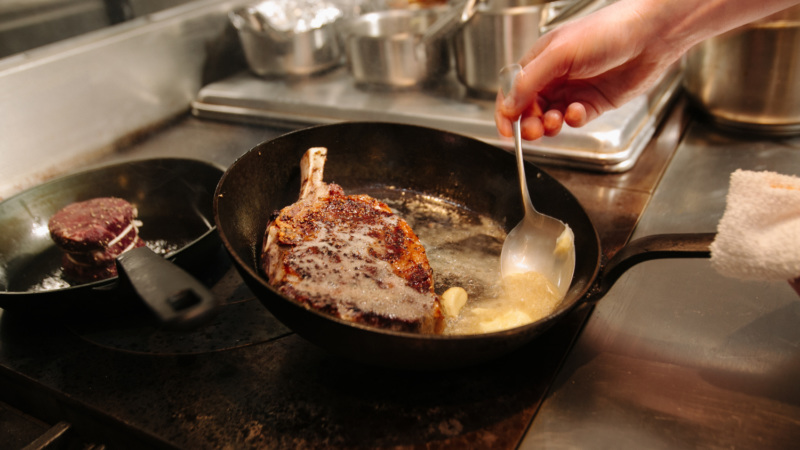
Five Ways to Understand the Steakhouse of Today
Among the perennial restaurant trends greeted by the ritual spilling of ink by legions of food writers, the return of…

How American Beauty Redefined the Steakhouse, L.A.-Style
It’s a breezy Saturday night in Venice, and the patio at American Beauty is packed. Diners crowd into the outdoor…
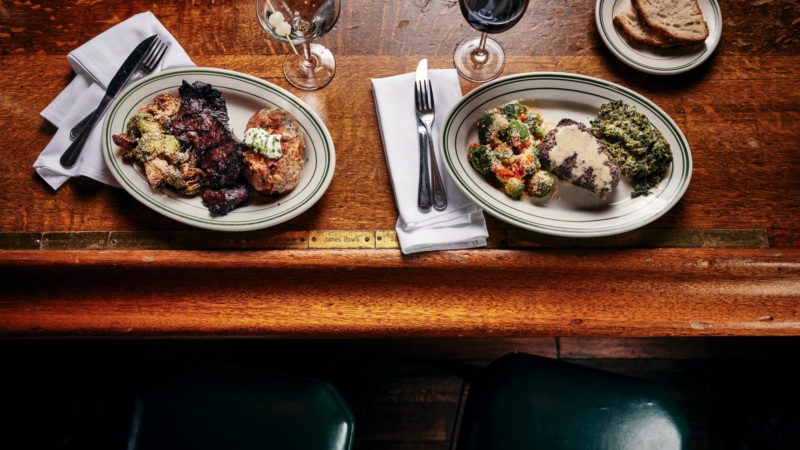
In a Changing City, Izzy’s Steakhouse Remains a Constant
Izzy’s Steakhouse has been serving up San Franciscans big thick cuts of blackened steaks and hearty sides of creamed spinach…
What are your favorite non-prime cuts of beef?
I like grilling cuts. We get a lot of flank steaks. Those are great in the wintertime, too. I think sometimes in the winter you forget that you can char meat. Putting on your boots and lighting the grill just gives you this feeling that it will be over soon. I love it as a winter steak.
We always have Denvers and those are pretty popular for us. They’re kind of the same portion size as you’d get in a filet, but with far more marbling.
And I love flat irons. Those are my most recent obsession. At Marrow, there’s a space where we always have flat irons hanging. It’s the shoulder, so it looks kind of like a boat paddle hanging. The flat iron sits up against the shoulder blade, so you can dry-age the s**t out of it. The bone protects it. So when you cut it off, it has so much flavor. It’s delicious and tender. It’s something that would in all likelihood go to grind in most applications. It’s a pain in the ass to butcher. It’s a muscle that’s separated by a huge run of sinew, so you really have two steaks. To an uneducated butcher — or me on “Top Chef” when I forgot about it — if you treat it like a single piece of meat, you might hate it. It requires knowledge of fabrication, but it’s a delicious muscle.
Do you have a go-to cooking method for steak?
If it’s not open fire, it’s cast iron all the time for me. We recommend you cook with animal fat —specifically tallow and lard — and not just because we sell animal fat at Marrow. It enhances the flavor, and I believe that it increases the Maillard reaction. There’s more sugar. And this isn’t backed by science in any way, but if you’re using beef fat to cook beef, the beef cooks better. It’s like the beef knows the fat.
Also, don’t be afraid to braise. Everybody should own a Crock-Pot, slow cooker, or Instant Pot. They’re your best friend. It’s really nice to come home to dinner already cooked.
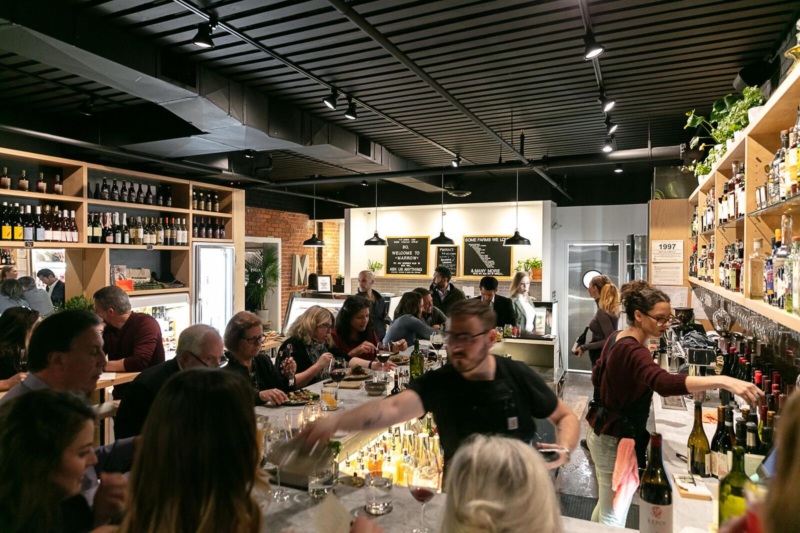

What about doneness? Why is medium rare so good and is there ever a time to lean a little more toward well-done?
I think it totally depends on the steak. We had this antique beef that we bought and if you took it even a little past blue rare it was very tough. It’s hard to say unilaterally what temp is good. The older I get, the more I appreciate things more on the medium side of medium rare. I like it heading out of medium rare. I think it allows the texture to be a little firmer. But you dry it out the longer you cook it. You’re continuing to pull moisture and fat out the more you cook it. No one likes dry baked goods, and it’s the same for steak.
Mark Kurlyandchik is the editorial director at Frame, a food incubator that hosts rotating chefs in metro Detroit. He is also the co-director of Coldwater Kitchen, a new feature-length documentary about a gourmet culinary school inside a Michigan prison. Produced by the Detroit Free Press, the film developed from Kurlyandchik’s tenure as the newspaper’s restaurant critic and dining reporter. Follow him on Instagram and Twitter. Follow Resy, too.


